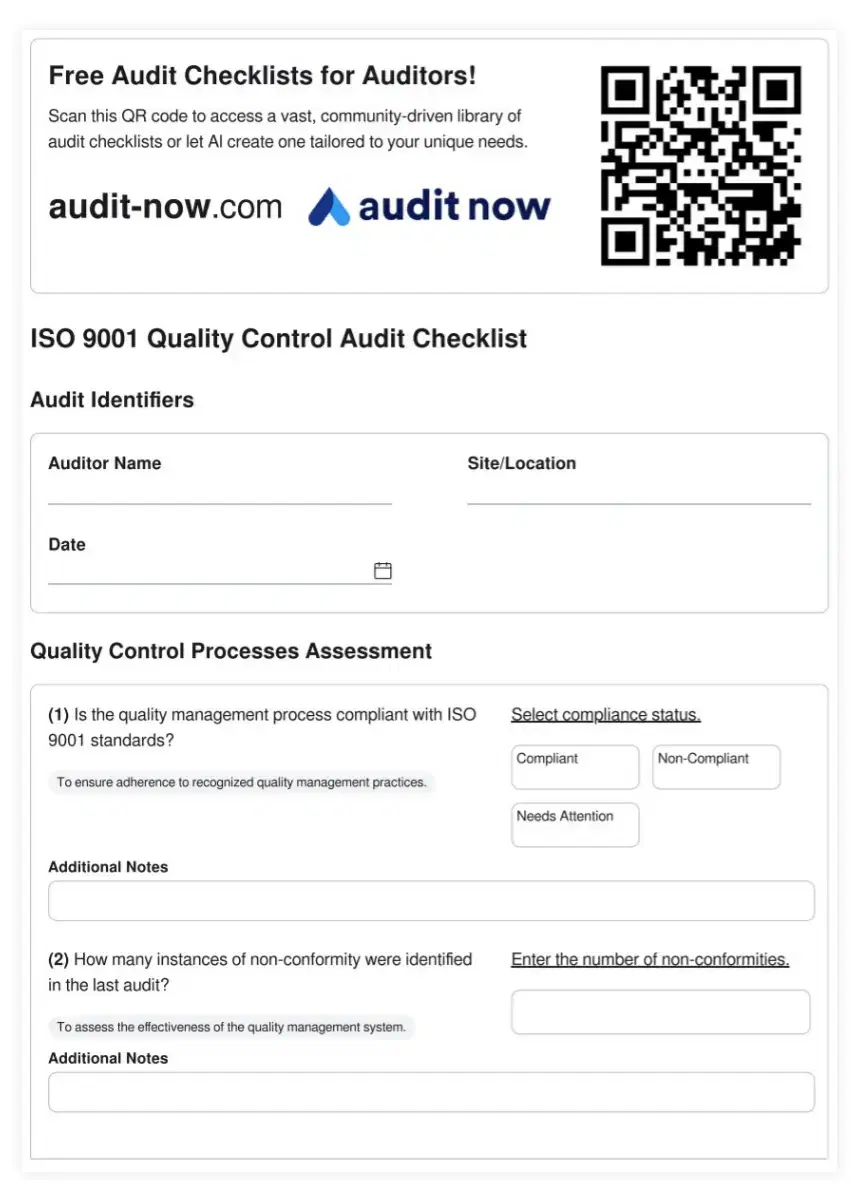Behind every great dining experience is a well-managed operation. In this guide, we explore the essential pillars of restaurant management and how digital tools can help you streamline performance, ensure compliance, and boost efficiency.
31 Oct 2025
•
Beril Işık

Featured Checklist

Hotel Restaurant and Dining Services Audit Checklist
The Hotel Restaurant and Dining Services Audit Checklist is a crucial tool for maintaining excellence in the culinary aspect of the hospitality industry. This comprehensive checklist helps hotel management evaluate and enhance the quality, safety, and efficiency of their food and beverage operations. By addressing key areas such as food quality, menu diversity, service standards, kitchen hygiene, and dining ambiance, this checklist ensures that hotels provide exceptional dining experiences that meet and exceed guest expectations. Regular implementation of this audit can lead to improved guest satisfaction, enhanced food safety compliance, increased restaurant revenue, and a stronger reputation for culinary excellence within the competitive hospitality market.
Running a restaurant goes far beyond serving delicious food. True success depends on effective restaurant management. The art of balancing people, processes, and performance.
Every detail plays a role in shaping the guest experience. The details include a wide range from staffing to hygiene and customer service.
In today’s competitive dining industry, restaurant managers must think smart. They need to ensure operational efficiency, regulatory compliance, and exceptional service quality. They also need to adapt to digital transformation and evolving customer expectations.
This guide explores what restaurant management involves and why it matters.It also covers how to optimize your restaurant for lasting success.
Restaurant management is about coordinating operations to deliver a great dining experience. It involves balancing front-of-house hospitality with back-of-house efficiency. This is important to ensure smooth service at every stage.
Effective management connects people, processes, and technology. This transforms daily tasks into a seamless guest experience. When these elements align, restaurants achieve both operational excellence and lasting customer loyalty.
A well-managed restaurant ensures that:
Restaurant managers often wear many hats. They act as leaders, problem-solvers, and brand ambassadors. They ensure that both front- and back-of-house operations align with the vision.
Modern restaurant management thrives on precision and consistency. That’s where digital softwares like Audit Now make a real difference.
Audit Now helps managers track inspections, track hygiene standards, and document compliance. It transforms paper-based checklists into smart, automated systems,
This ensures smoother operations, fewer errors, and complete visibility across every shift.
Start using Audit Now to digitize your checklists, track compliance, and maintain excellence across every location.
Start Now
Successful restaurant management depends on several interconnected pillars. They work together to keep the operation running. Each area plays a role in shaping the dining experience.
When these pillars are in the same line, restaurants can maintain consistency. They can also boost team performance. Strong coordination between departments ensures that every guest interaction reflects quality.
Smooth daily operations are the foundation of restaurant success. A manager’s job is to make sure every shift runs seamless.
Core operational tasks include:
When the restaurant manager optimizes workflows, the restaurant becomes more predictable, efficient, and profitable.
In a restaurant, food safety isn’t optional. It’s a legal and ethical necessity. Following international protocols like HACCP protects both your brand.
Restaurants that ignore food safety risk fines, closures, and long-term brand damage. Managers must ensure that every step of food handling meets strict guidelines.
Use a HACCP Compliance Checklist is important to:
Digital auditing tools like Audit Now help restaurants automate safety checks, document compliance. You can also generate instant inspection reports. This makes restaurant audits faster and more reliable.
A restaurant’s success depends on its people. Trained, motivated employees directly impact the customer experience and operational consistency.
Empowered staff are more engaged, proactive. They are better equipped to handle challenges during busy shifts.
Regular training and recognition also build a culture of accountability. This causes smoother teamwork and higher service quality.
Employees should feel valued and supported. So, their enthusiasm naturally translates into memorable dining experiences for guests.
Best practices for staff management include:
When employees feel valued and well-trained, turnover rates drop and productivity rises.
Every successful restaurant runs on structure. Standard Operating Procedures (SOPs) ensure that every process follows consistent guidelines.
Well-documented SOPs reduce confusion and save time. They also guarantee that every team member performs tasks to the same standard. They also make onboarding new employees easier. This ensures everyone understands expectations from day one.
Over time, these routines create consistency that builds guest trust. This strengthens the restaurant’s reputation for reliability and quality.
Implementing Standard Operating Procedures (SOPs) brings structure and accountability to restaurant management. They help teams work more efficient. It eliminates guesswork and ensuring consistency across shifts and locations.
SOPs also reduce training time for new employees. They cut errors in service or food preparation. When defined, they act as a foundation for quality control.
They allow managers to track performance, identify weak spots. So they can maintain compliance with hygiene and safety regulations. Their benefits can be listed as such:
Creating SOPs for each department builds discipline and simplifies monitoring. It also ensures that quality doesn’t depend on who’s on duty. But rather on well-defined systems.
Technology is revolutionizing how restaurants operate. From digital reservations to AI-powered audits, smart tools streamline workflows and eliminate repetitive tasks.
Modern restaurant managers now rely on digital inspection and audit systems to maintain consistency and compliance across all operations.
Audit Now make it easier to track hygiene standards, staff performance. You can also watch document safety checks in real time.
Instead of relying on paper forms, managers can access live dashboards. They display operational metrics such as food temperature logs, cleaning schedules.
Technology also enhances accountability by turning audits into actionable insights. Automated alerts notify teams of missed tasks or non-compliance issues.
Regular digital inspections ensure that every process meets brand and regulatory standards. By integrating these tools into daily operations, restaurants can stay compliant. They can also operate with greater transparency, accuracy, and confidence.
Top-performing restaurants never settle. They review data, learn from mistakes, and constantly improve.
Ways to promote continuous improvement:
A culture of improvement ensures resilience in changing markets.
Restaurant management is the balance between structure and creativity. When the staff work together, your restaurant becomes more than a place to eat. It becomes an experience guests remember.
If they combine efficient operations and smart technology, managers can streamline performance.
With Audit Now tracking audits and ensuring quality across every shift becomes easier. This gives managers more time to focus on the most important part. That is creating unforgettable guest experiences.
Audit Best Practices: Learn More
What Does a Restaurant Manager Do? Key Responsibilities and Best Practices
The Complete Guide to Restaurant Inventory Management in 2025